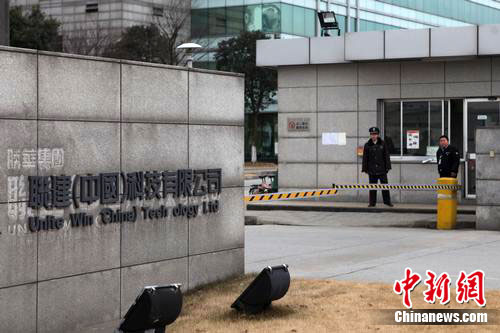Apple's China factory: 58 poisoned quit
Fifty-eight of the 101 confirmed cases of poisoned workers at one of Apple Inc.'s suppliers in China have resigned with a one-time subsidy, after safety issues were exposed recently in Apple's annual supplier responsibility report, according to the website of Xinhua News Agency.
 |
|
The gate of United Win Technology Ltd. in Suzhou, east China's Jiangsu Province. [Photo: Chinanews.com] |
The supplier, United Win Technology in Suzhou, East China's Jiangsu Province, finished the rating of work-related injuries for employees who worked under the exposure of N-Hexane, an alcohol-substitute chemical used to clean components such as iPhone screens.
The company promised them a subsidy which covers injury compensation, medical care subsidies and employment subsidies, but these same people must terminate their labor contracts and declare their employer irresponsible for any future medical expenses incurred thereafter.
The fifty-eight victims, who agreed to the injury rating results accepted the offer of a subsidy that ranges from 70,000 yuan to 140,000 yuan, but others chose to stay for fear of losing out on compensation due to medical problems in the future.
Cheng Xiaoqun, one of those who would like to stay, said he will be transferred to another post away from the cleaning work.
Although medical care services were provided for victimized employees, some thought they have not completely recovered and would probably suffer from long-term physical ailments.
Guo Ruiqiang, an operator at the factory who also stayed, has been out of the hospital for seven months. He said he felt bad during the past two months and it seemed that the disease has relapsed.
"I cannot quit my job for my situation, because I don't know what will happen in the future," Guo said that his stay would at least secure that the company will possibly pay for his medical bills in the future.
N-Hexane is widely-used in the industry, especially as an ingredient for special glues used for roofing, shoes, and leather industries. Exposure to it can cause muscle wasting and atrophy. It can potentially paralyze a person's arms and legs if proper safety precautions have not been followed.
 0
0 






